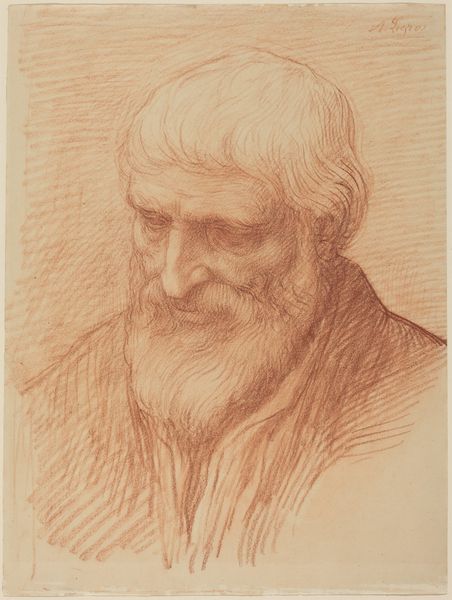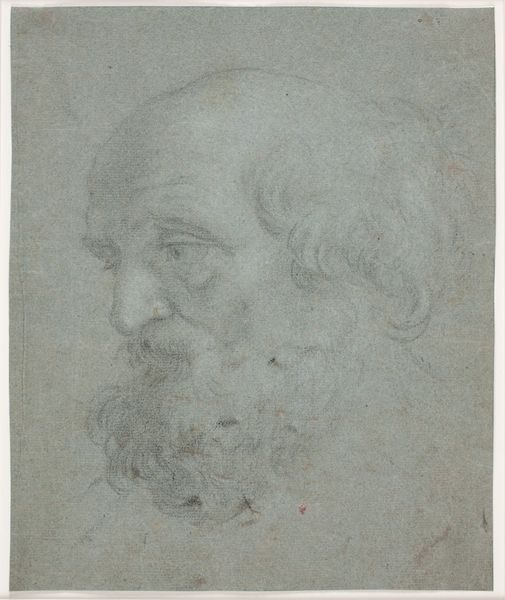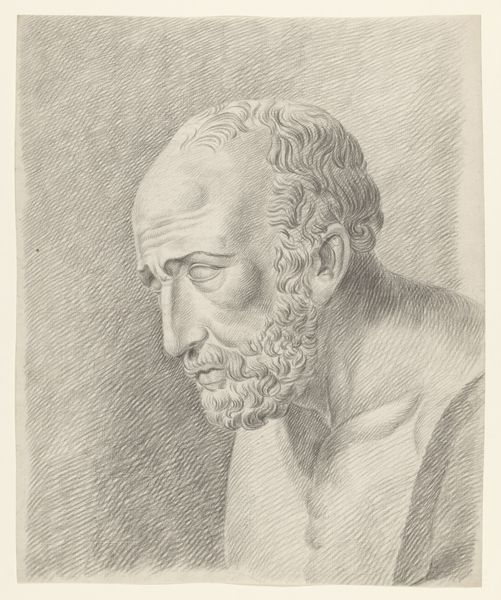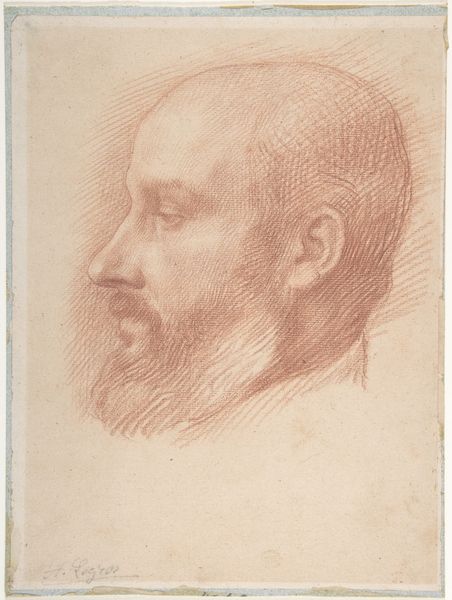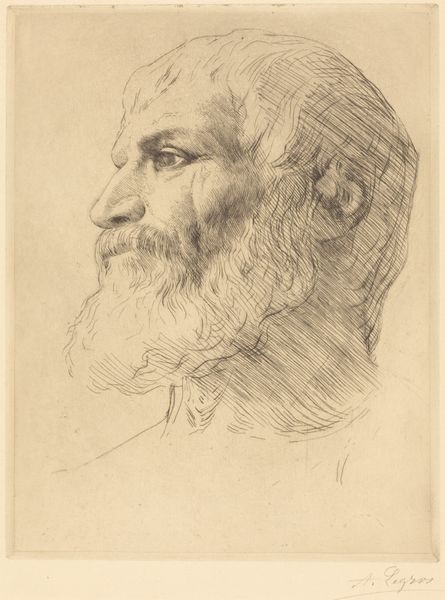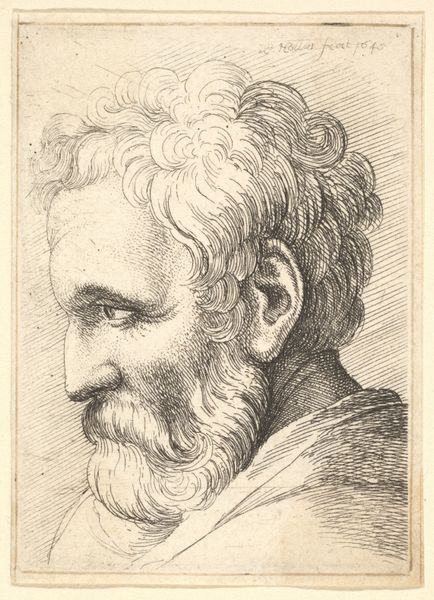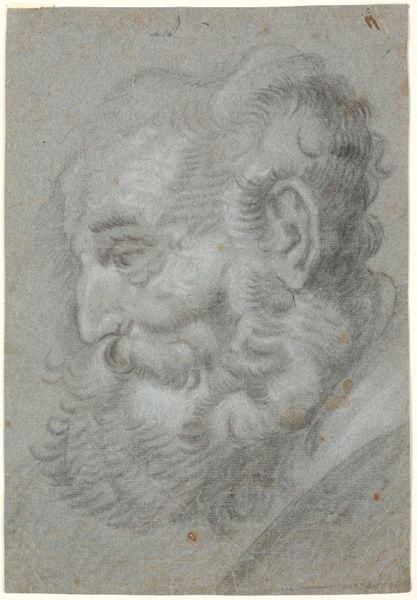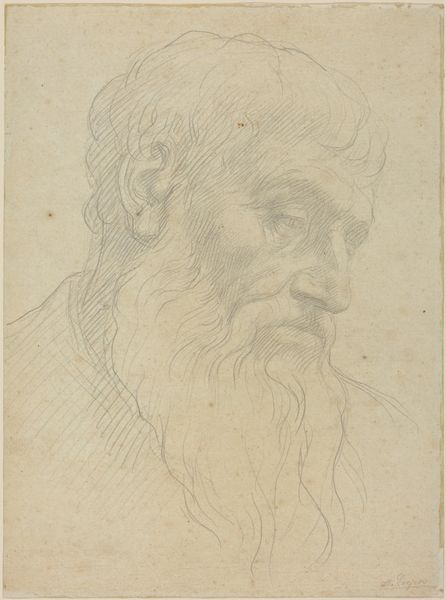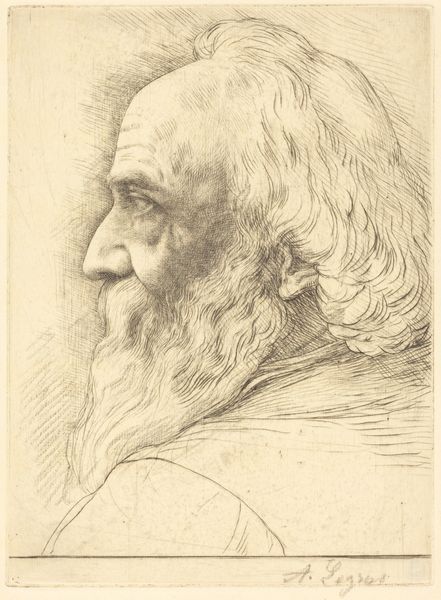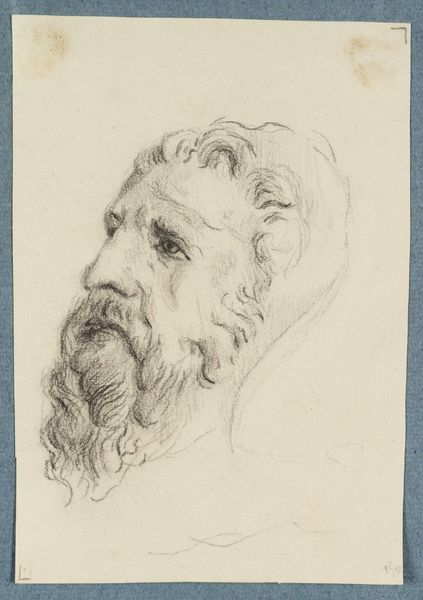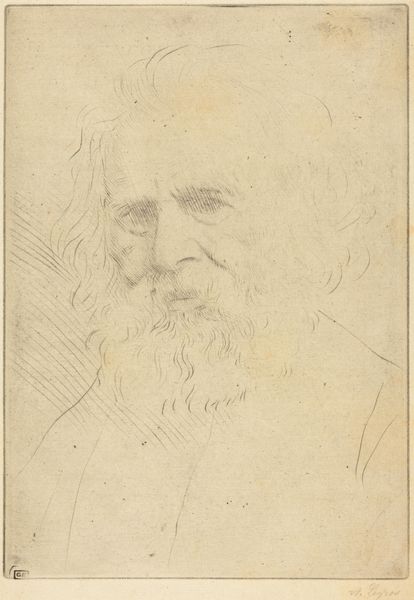
drawing, charcoal
#
portrait
#
drawing
#
charcoal drawing
#
portrait reference
#
pencil drawing
#
portrait drawing
#
charcoal
#
realism
Dimensions: overall (approximate): 25.1 x 19.5 cm (9 7/8 x 7 11/16 in.)
Copyright: National Gallery of Art: CC0 1.0
Curator: This is Alphonse Legros' "Head of a Man," a charcoal drawing. The artist captured the profile view in striking detail. What strikes you most about it? Editor: There's a stillness and serenity to the figure, despite the rather unforgiving gaze. The limited color palette focuses my attention on the texture of the charcoal itself and the subject’s very fine features. It almost feels…ancient, monolithic, in its simplicity. Curator: It’s interesting you pick up on that monolithic quality. Legros, along with artists like Poynter and Leighton, pushed for a classical revival within British art education. Consider that the antique, often depicted through drawing, formed a crucial aspect of academic training during that period. This portrait seems to echo that emphasis. Editor: That context explains the figure's slightly detached presence. Technically, I find the hatching remarkable. The artist skillfully creates a sense of volume, especially in the beard, and effectively employs negative space to define the jawline. There is remarkable tonal modulation given the material simplicity. Curator: Absolutely. The emphasis on draftsmanship served an important didactic purpose. Legros taught at the Slade School, so this might be connected to the artistic pedagogies promoted during this period. How did these teachings shape students’ abilities and approaches to representation? What institutional biases may have been subtly reinforced? These are key questions in considering a work like this. Editor: That’s an important consideration. Looking at this strictly in terms of form, the even application of tone makes this a rather controlled portrait. I can appreciate its objective clarity. Curator: Indeed, understanding art demands that we address not just its aesthetics, but the surrounding historical and social dialogues as well. This approach reminds us that artworks were always, and remain, entrenched within these conditions. Editor: A fitting synthesis. The image stands alone with understated intensity but gains richness as we see its historical echoes.
Comments
No comments
Be the first to comment and join the conversation on the ultimate creative platform.

